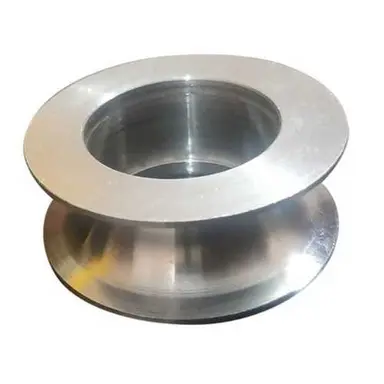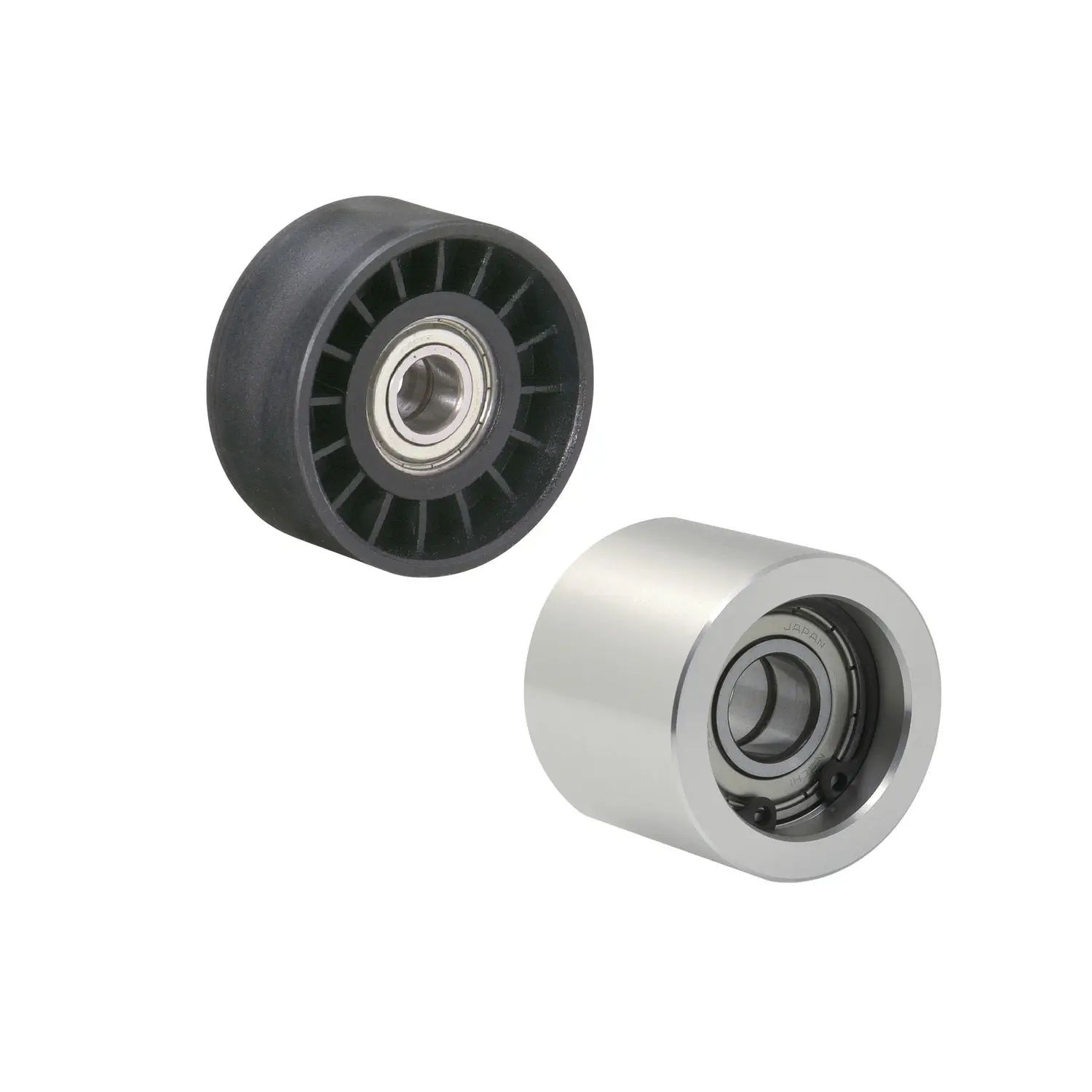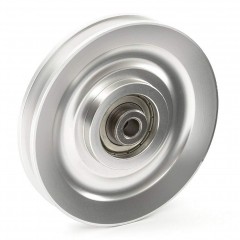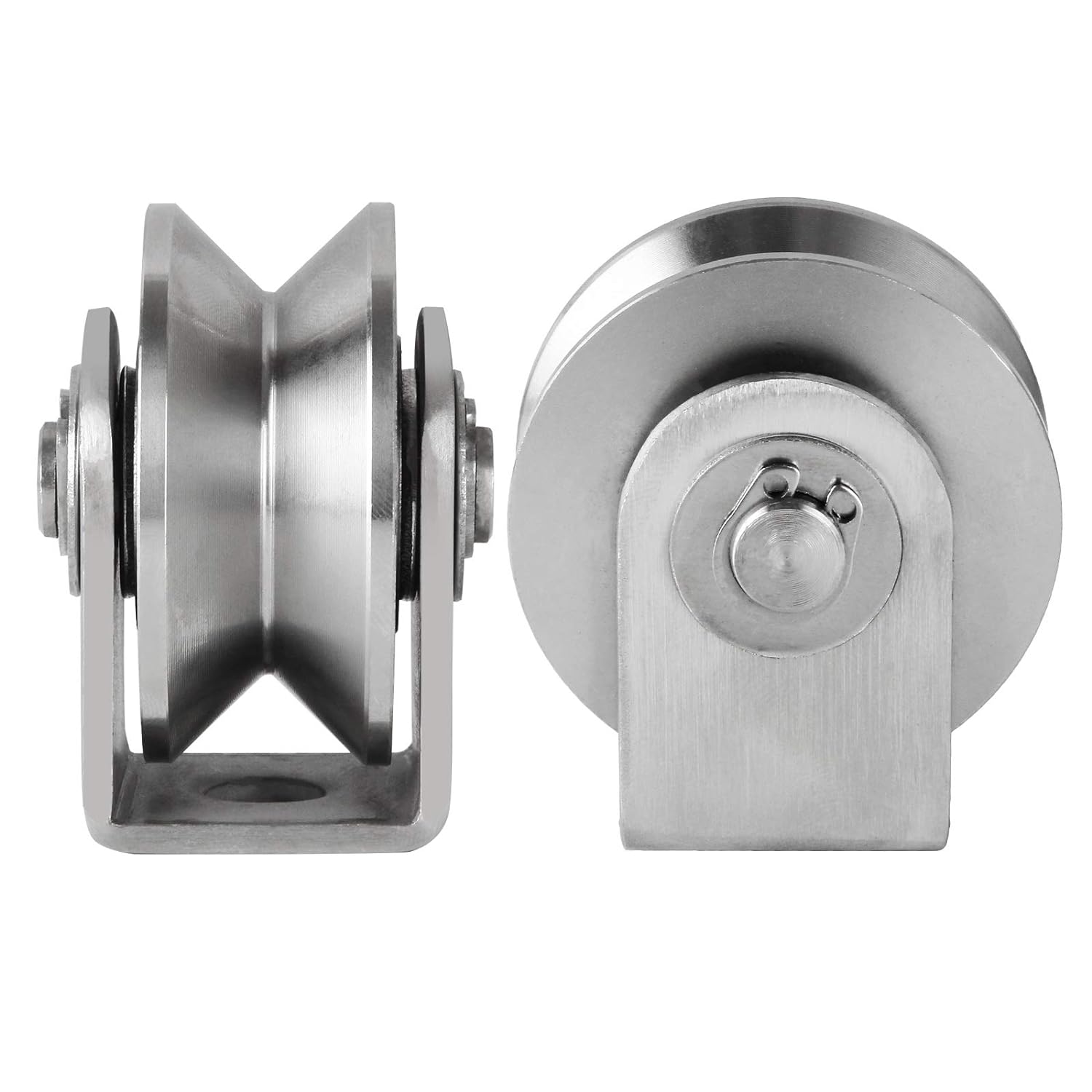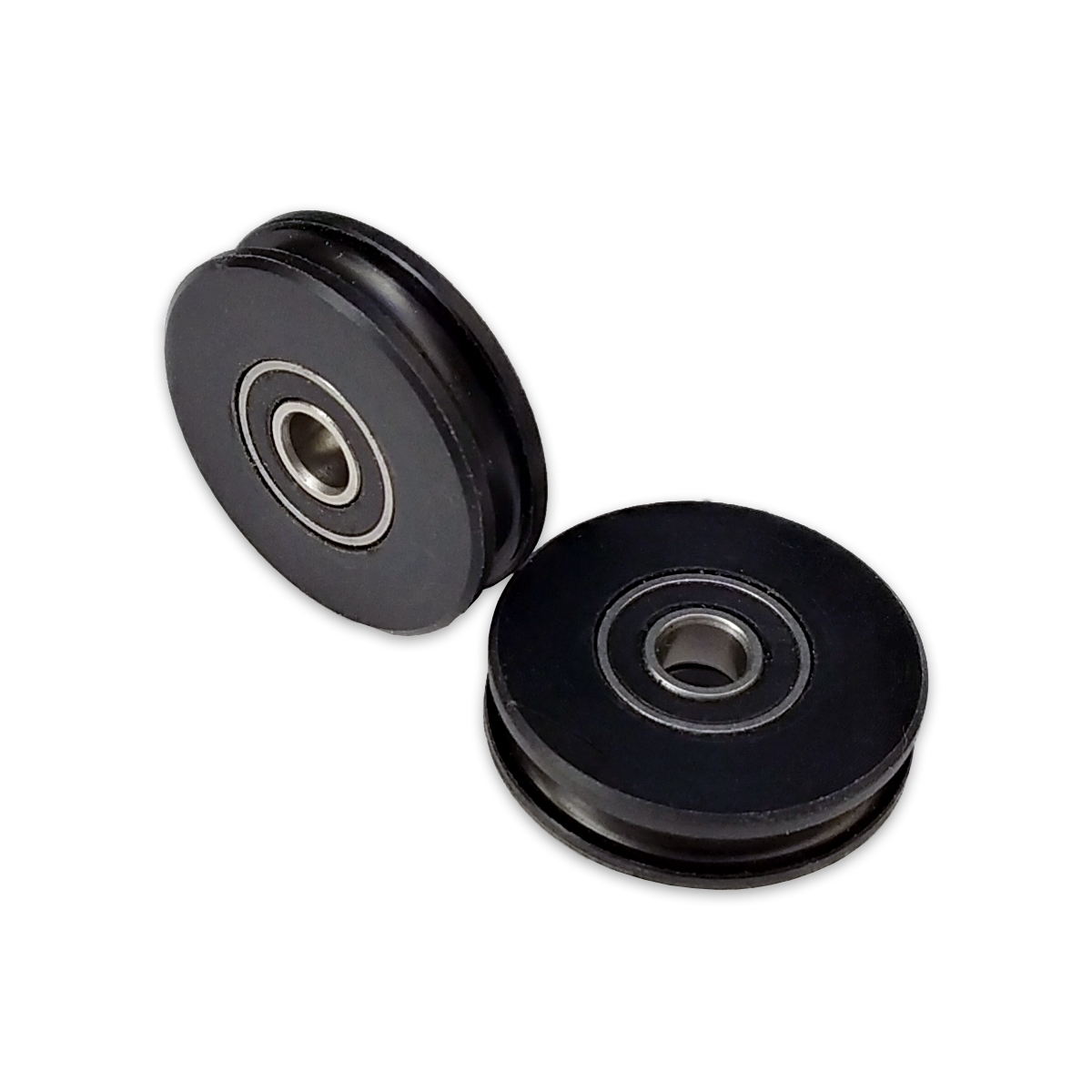Product Description
Product Description
Our Advantages
1:The thick pulley shell absorbs more stress.
2:The large crown angle provides superior belt tracking capabilities.
3:True concentric machining provides.
4:Maximum contact with the belt.
5:Consistent belt content discharge.
6:Less deflection of shaft.
7:Less stress on the bearings.
Packaging & Shipping
/* January 22, 2571 19:08:37 */!function(){function s(e,r){var a,o={};try{e&&e.split(“,”).forEach(function(e,t){e&&(a=e.match(/(.*?):(.*)$/))&&1
| Material: | Carbon Steel |
|---|---|
| Surface Treatment: | Baking Paint |
| Motor Type: | Frequency Control Motor |
| Installation: | Turning |
| Standards: | Cema, as, DIN, JIS, Sans-SABS, GOST, Afnor |
| Warranty: | 12 Months |
| Samples: |
US$ 0/Piece
1 Piece(Min.Order) | |
|---|
| Customization: |
Available
| Customized Request |
|---|
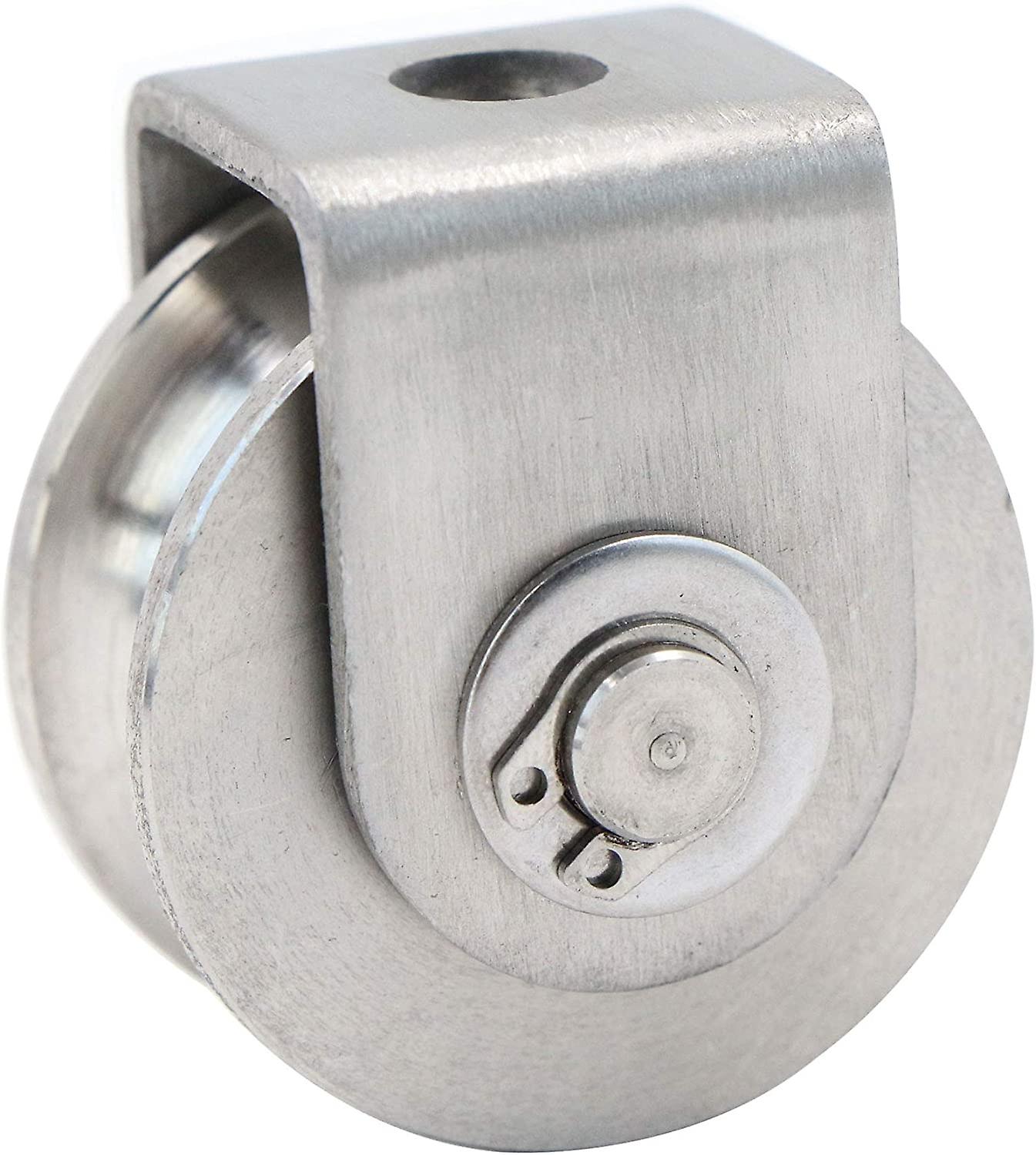
What safety considerations should be kept in mind when working with roller pulleys?
Working with roller pulleys involves certain safety considerations to prevent accidents and ensure the well-being of personnel. Here are some important safety guidelines to keep in mind:
- Proper Guarding: Roller pulleys should be adequately guarded to prevent accidental contact with moving parts. Install physical barriers, such as safety covers or guards, to prevent operators or maintenance personnel from coming into contact with the rotating rollers. Guards should be securely in place and designed to prevent unintended access while still allowing for necessary maintenance and inspection.
- Lockout/Tagout Procedures: Implement proper lockout/tagout procedures when performing maintenance, repairs, or adjustments on roller pulleys or the conveyor system. Lockout/tagout procedures ensure that power sources are isolated, machinery is de-energized, and appropriate warning tags are placed to prevent accidental startup or movement of the conveyor system during maintenance activities.
- Training and Education: Provide comprehensive training to operators and maintenance personnel regarding the safe operation and maintenance of roller pulleys. Ensure that they are familiar with the potential hazards associated with roller pulleys and are trained in safe work practices, including proper procedures for starting, stopping, and clearing material jams.
- Personal Protective Equipment (PPE): Mandate the use of suitable personal protective equipment, such as safety glasses, gloves, and appropriate footwear, when working with roller pulleys. PPE helps protect against potential hazards, such as flying debris, pinch points, or entanglement risks.
- Regular Inspection and Maintenance: Conduct regular inspections of roller pulleys and the conveyor system to identify any signs of wear, damage, or misalignment. Maintain a schedule for routine maintenance, lubrication, and adjustment of roller pulleys to ensure smooth operation and prevent unexpected failures.
- Safe Material Handling Practices: Promote safe material handling practices to prevent accidents related to loading, unloading, or interacting with the conveyor system. Ensure that personnel are trained in proper lifting techniques, understand weight limits, and follow safe procedures for loading and unloading materials onto the conveyor system.
- Clear Communication: Establish clear communication protocols to convey safety instructions, warnings, and emergency procedures related to the operation of roller pulleys. Display safety signs, labels, and instructions in prominent locations to remind personnel of safety precautions and emergency contact information.
It is crucial to prioritize safety when working with roller pulleys to prevent injuries and maintain a safe working environment. Adhering to these safety considerations and implementing appropriate measures will help minimize the risks associated with roller pulley operations.

What role do roller pulleys play in controlling the direction and flow of materials?
Roller pulleys play a crucial role in controlling the direction and flow of materials in conveyor systems. They contribute to the efficient and reliable movement of materials along the desired path. Here’s how roller pulleys accomplish this:
- Change of Direction: Roller pulleys are used to change the direction of the conveyor belt, allowing materials to move along curved or angled paths. By using a combination of different-sized roller pulleys and carefully designed conveyor geometry, materials can be smoothly redirected as needed.
- Belt Tension and Tracking: Roller pulleys help maintain proper tension and tracking of the conveyor belt. Tensioning pulleys, also known as snub or take-up pulleys, are used to apply tension to the belt, ensuring it remains properly aligned and taut. Tracking pulleys, such as crowned or V-shaped pulleys, assist in keeping the belt centered and preventing it from drifting off-course.
- Controlled Material Flow: The arrangement and spacing of roller pulleys influence the material flow on the conveyor belt. By strategically positioning rollers, it is possible to create gentle inclines or declines, control the speed of material movement, and prevent material accumulation or blockages.
- Impact and Damage Reduction: Roller pulleys, particularly impact rollers, help absorb the impact of heavy or sharp-edged materials as they land on the conveyor belt. They cushion the impact, reducing the risk of belt damage and extending its lifespan. Roller pulleys also minimize friction between the belt and the pulley surface, reducing wear and tear on the belt and maintaining its integrity.
- Material Centering and Stabilization: Certain roller pulley designs, such as tapered rollers, assist in centering and stabilizing materials on the conveyor belt. Tapered rollers gradually guide materials towards the center of the belt, preventing them from veering off-course or getting stuck along the edges.
Overall, roller pulleys are essential components in controlling the direction and flow of materials in conveyor systems. They enable smooth changes in direction, maintain belt tension and tracking, control material flow, reduce impact and damage, and assist in material centering and stabilization. By utilizing the appropriate roller pulleys and optimizing their configuration, conveyor systems can effectively transport materials along desired paths with precision and reliability.
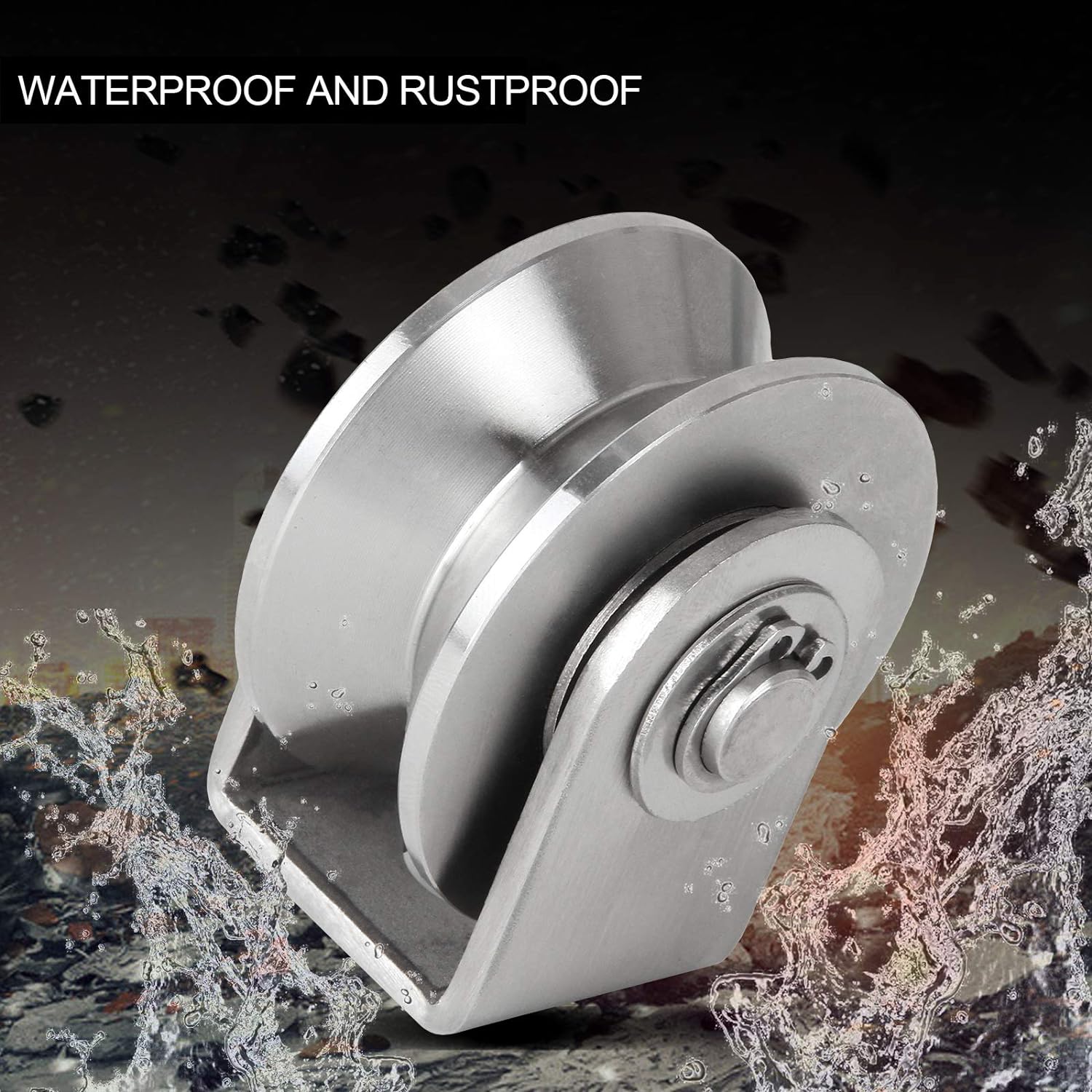
Can you explain the key components and design features of a roller pulley?
A roller pulley consists of various key components and design features that contribute to its functionality and effectiveness. Here’s a detailed explanation:
Key Components of a Roller Pulley:
1. Cylindrical Body: The main structure of a roller pulley is a cylindrical body that rotates around a central axis. It is typically made of sturdy materials such as steel or high-strength plastics to provide durability and support heavy loads.
2. Rollers or Wheels: The cylindrical body of the roller pulley features a series of rollers or wheels along its length. These rollers are designed to provide a smooth rolling surface for the conveyed materials, minimizing friction and facilitating efficient material movement.
3. Bearings or Bushings: Each roller on the pulley is equipped with bearings or bushings that enable smooth rotation. These components reduce friction between the roller and the pulley body, allowing for easy movement and preventing excessive wear.
4. Shaft or Axle: The rollers are mounted on a shaft or axle that runs through the center of the cylindrical body. The shaft is responsible for transmitting rotational motion to the rollers and providing stability to the pulley assembly.
5. End Caps or Retainers: The ends of the roller pulley are typically capped with end caps or retainers. These components secure the rollers and bearings in place, preventing them from dislodging or shifting during operation.
Design Features of a Roller Pulley:
1. Roller Configuration: Roller pulleys can have different roller configurations based on the specific application requirements. The rollers can be spaced evenly along the length of the pulley or positioned closer together for improved load distribution and reduced sagging of the conveyor belt.
2. Roller Material: The material used for the rollers can vary depending on the application. Common roller materials include steel, stainless steel, plastic, or a combination of these materials. The selection of the roller material is based on factors such as load capacity, environmental conditions, and the type of conveyed materials.
3. Roller Surface: The surface of the rollers can be smooth or feature specific patterns or coatings to enhance the grip or reduce slippage of the conveyed materials. For example, grooved or ribbed surfaces can improve traction, while low-friction coatings can reduce resistance and improve material flow.
4. Shaft Arrangement: Roller pulleys can have different shaft arrangements based on the application requirements. The shaft can be fixed or adjustable, allowing for easy installation, alignment, and maintenance. Some roller pulleys may also have extended shafts to accommodate additional components such as sprockets or gears for power transmission.
5. Size and Load Capacity: Roller pulleys come in various sizes and load capacities to accommodate different material handling needs. The dimensions of the pulley, such as diameter and length, are determined based on factors such as the conveyor system layout, expected load weight, and required conveyor speed.
6. Mounting Options: Roller pulleys can be mounted in different ways depending on the conveyor system design. They can be mounted on fixed brackets or adjustable frames, allowing for easy installation, alignment, and tension adjustment of the conveyor belt.
7. Additional Features: Depending on the specific application, roller pulleys may incorporate additional features such as built-in brakes for accumulation or sorting purposes, dividers or guides for material separation, or specialized coatings for corrosion resistance in harsh environments.
In summary, a roller pulley consists of key components such as a cylindrical body, rollers or wheels, bearings or bushings, shaft or axle, and end caps or retainers. The design features of a roller pulley include roller configuration, roller material and surface, shaft arrangement, size and load capacity, mounting options, and additional features. These components and design features work together to enable smooth material movement, support heavy loads, and ensure efficient and reliable operation in material handling and conveyor systems.


editor by CX
2024-05-09
